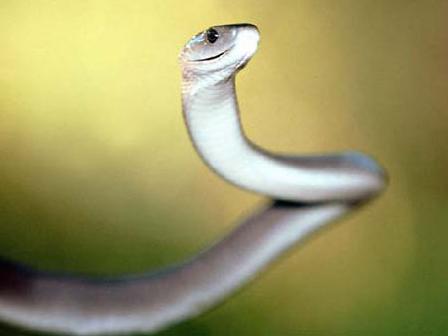 In the scenic rim/Logan area we are lucky enough to enjoy an abundance of wildlife, although some species may not be as welcome around our homes, namely, the venomous kinds. Wild snakes and family pets are never a good combination, and with summer right around the corner it's essential to understand the dangers a snakebite may pose to your beloved pet, as well as what to do in the event of a venomous bite.
In the scenic rim/Logan area we are lucky enough to enjoy an abundance of wildlife, although some species may not be as welcome around our homes, namely, the venomous kinds. Wild snakes and family pets are never a good combination, and with summer right around the corner it's essential to understand the dangers a snakebite may pose to your beloved pet, as well as what to do in the event of a venomous bite.
Most of us know that snakes prefer to be left alone, but unfortunately our pets may have other ideas! Summer is the height of snakebite cases and unfortunately with Queensland's warm weather we see cases either side of the hottest season. Australia has the largest number of venomous snakes but locally our pets are most often bitten by Brown snakes and Red-bellied Black snakes occasionally. We also have Taipans, Rough-scaled snakes and also Death Adders in the rocky areas near the edges of rugged hills. If you see a snake remember it is not only illegal to kill/catch them, but doing so puts your life in danger. Take note of identifying features and call your local snake catcher.
Symptoms
Symptoms of snakebite may vary in kind and intensity, obviously depending on the species of snake, the amount of venom the snake managed to inject, the wound site, and your pet's individual reaction to its bite.
These symptoms include,
Wobbly gait and weakness, especially starting in the hindquarters
Vomiting or gagging
Difficulty breathing with or without going blue/purple in the gums.
Collapse
Shaking and/or convulsions
Pupils dilate and do not respond to light
Blood in urine
Paralysis
Sometimes a pet will collapse shortly after a bite, only to seemingly recover after a half hour or so and then be relatively symptom-free for several hours, before collapsing again and this time not spontaneously improving. Thus a dog bitten in the evening might be "doing fine when we went to bed," but becomes seriously unwell during the night and by morning, possibly even dying.
There is a high likelihood that your pet may die without antivenom treatment, and as with most thing,s treating earlier in the course of the disease means a greater likelihood of recovery and a likelihood of an earlier recovery .
More common wound sites are around the head and legs, but can it be very hard to see, as the fangs themselves are quite narrow. There MAY be a slight swelling (or more) at the site but often the site of the bite will be unknown.
Treatment
Treatment usually consists of IV fluid administration, anti-inflammatories, snake anti-venom, and in severe cases, oxygen administration.
Anti-inflammatories are used to help with muscle pain and also to reduce reactivity against the antivenom itself, as it is a horse blood-product being used in a different species. The same applies to its use in humans. There are several types of antivenoms but fortunately some cross-react against a number of species.
As the most common bites are Brown and Black snake bites it makes sense to use a multivalent (multiple snake) antivenom unless the actual snake can be positively identified by counting scales. DO NOT try and catch a snake for identification purposes, it is not worth the risk of being bitten yourself! As Brown snakes, for example, vary from almost silver-white to almost black and can have some lighter almost reddish mottling on their bellies, an identification on a fleeting glimpse can be difficult. We usually administer antivenom slowly diluted in a bag of saline under strict observation to allow us to monitor the condition of the patient and allow treatment for reactionary shock from the infusion.
Fluids are administered to the snake-bitten pet to increase kidney flushing and urinary flow, reducing the chance of kidney damage due to muscle membrane damage and myoglobin (the red stuff) leakage. It also provides us with a vehicle to administer other medications including sedatives, vitamins and glucose for longer-term patients.
Patients who have progressed their symptoms to having breathing difficulties may require oxygen therapy to keep alive. This is usually supplied via a catheter except in very short bursts when a mask may be used. On rare occasions the pet may require anaesthesia.
Other treatment may be required on an individual case-by-case basis. There is ongoing monitoring needed to maximise the likelihood of recovery.
Prognosis
Roughly 80% of pets may survive snakebite if the correct treatment is administered in a timely fashion. Obviously survival is much lesser if the injury is left untreated. Length of recovery depends on your pet's species, length of time between bite, onset of signs and treatment, amount of venom injected/absorbed, innate toughness, immunity, species of snake, size of snake and victim, and other factors, as well as the influence of luck!
Prevention
It is difficult to prevent snakes from biting a curious pet, but there are a few things you might try:
- Make your property less attractive to snakes. Remove places they might like to hide, ensure to keep the area free of debris which might attract a snake's prey, and keep in mind snakes are often drawn to large bodies of water. Keep grass short. If you can't get rid of these things perhaps consider keeping your pet away from these area instead.
- Walk your dog on a lead and make lots of noise if in bushland/long grass.
- Keep of top of vermin management
- Snake Repellers
There are also products available such as Sentinel Q Solar Snake Repellers which work by emitting a pulse which snakes should feel as a vibration transmitted though the ground. Snakes are then supposed to perceive danger and steer clear of the area.
We have been trialing these for about 12 months and they appear to be effective.
Contact the clinic if you would like to find out about these.
Bear in mind that we see only a small fraction of the snakes that pass through our environment. Most of them are not looking for a fight and would much rather be on their way if given a chance. So use caution when dealing with them, and ideally call a snake catcher to remove the snake safely and efficiently.
We hope your summer will be snake-free!









